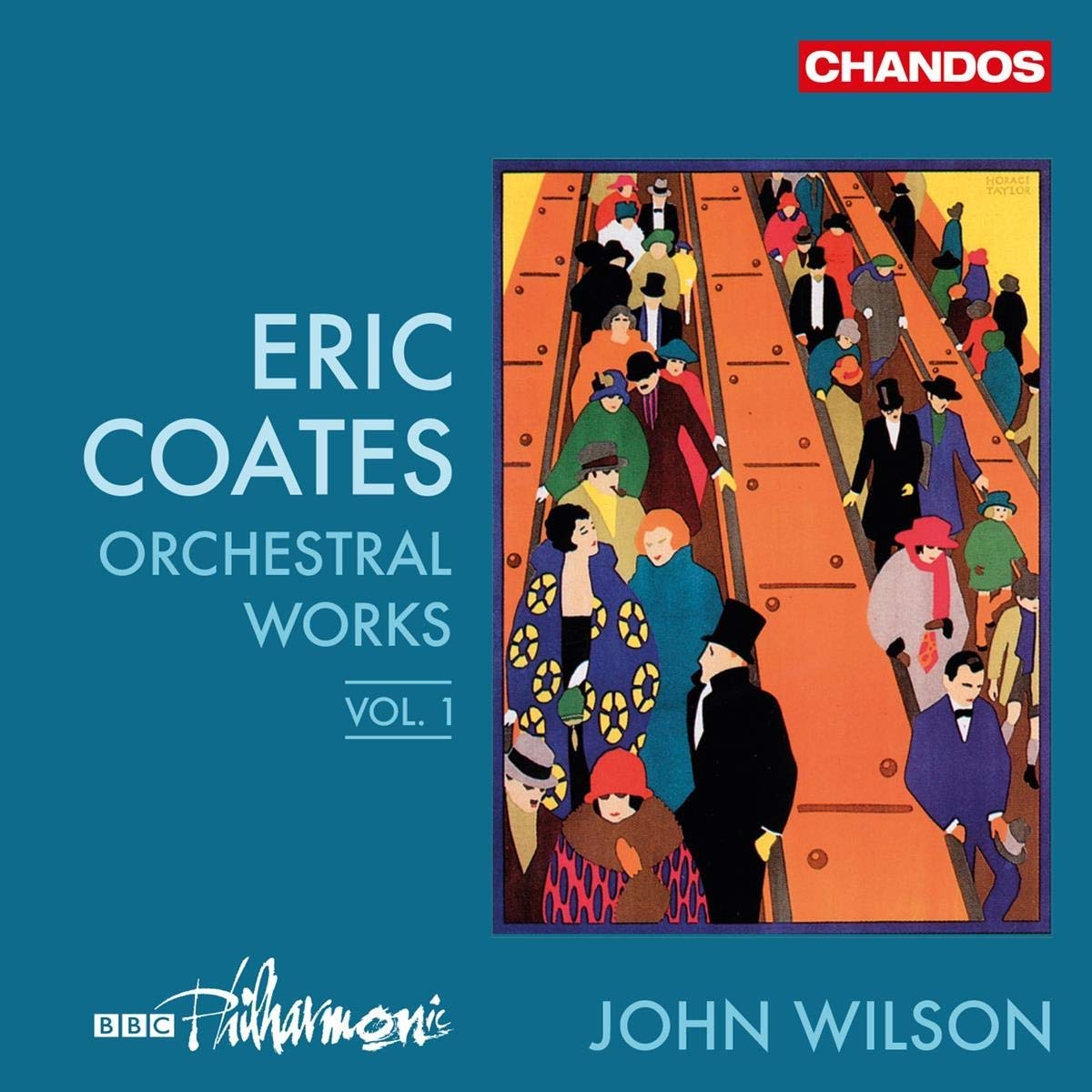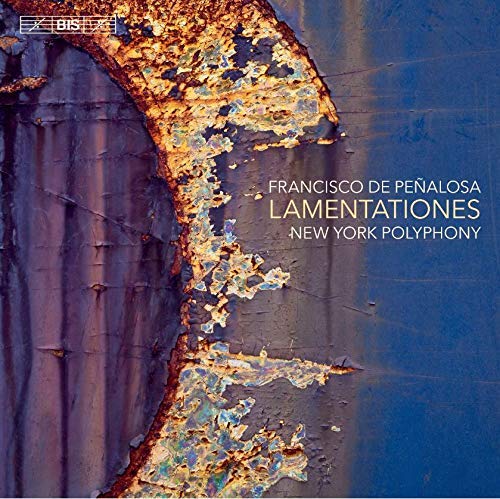 Eric Coates: Orchestral Works, Vol. 1 BBC Philharmonic/John Wilson (Chandos)
Eric Coates: Orchestral Works, Vol. 1 BBC Philharmonic/John Wilson (Chandos)
One reason to love Eric Coates and his music is discovering that his compositional routine involved waiting “until he was properly dressed in the morning, complete with tie and Harris Tweed coat, and, perhaps, a Turkish cigarette.” Coates came from a Nottingham mining village, taking violin lessons from a pupil of Joachim and studying musical theory with a Nottingham academic. He played in Henry Wood’s Queen’s Hall Orchestra, concentrating on composition after being fired for missing too many rehearsals. Wood’s loss was our gain. The pieces on this disc are all good, several of them brilliant. A suite from a 1932 ballet, The Jester at the Wedding, contains exquisite music. It's wonderfully orchestrated, suggesting that. There's a terrific, emotionally charged passage near the close, the titular jester left alone, "with nothing but the memory of the princess’s presence.” You'll reach for the Kleenex. John Wilson knows just how good this music is, his BBC Philharmonic playing like gods. There's more Strauss in Dancing Nights, and anyone suspecting that Coates was just a skilled purveyor of fluff should investigate the earliest piece included: the 1902 Ballad is an irresistibly Elgarian string miniature.
Coates was a prolific songwriter, his Two Symphonic Rhapsodies neat orchestral transcriptions of a pair of best sellers. Who wouldn't want to hear a piece called I Pitch My Lonely Caravan? Everyone should, actually, as it's super. When Coates appeared on Desert Island Discs in 1951, Roy Plomley allowed him to take By the Sleepy Lagoon as a ninth bonus record. Wilson does it proud. There's also the overture The Merrymakers, and the London Suite. This "Westminster" is improbably calm, and the "Knightsbridge" march swaggers. A lovely disc.
 Dvořák: Piano Concerto, Martinů: Piano Concerto No 4, ‘Incantation’ Ivo Kahánek (piano), Bamberger Symphoniker/Jakub Hrusa (Supraphon)
Dvořák: Piano Concerto, Martinů: Piano Concerto No 4, ‘Incantation’ Ivo Kahánek (piano), Bamberger Symphoniker/Jakub Hrusa (Supraphon)
Dvořák’s Piano Concerto in G minor was championed by Sviatoslav Richter, but still hasn't found a place in concert programmes. Various reasons have been given for its neglect. Pianist Ivo Kahánek suggests in this disc's booklet interview that Dvořák’s chamber music sympathies led him to compose passages which “come across more as virtuoso parts of a piano trio than features of a mature piano concerto,” and this large-scale work was heard for many years in a heavily rewritten version by Vilém Kurz. If you're not expecting an epic battle between soloist and orchestra, you won't be disappointed; this work sounds at times like an extended orchestral piece with obbligato piano. The piano part is incredibly demanding, though you might not notice. Kahánek and Jakub Hrusa make a brilliant case for a loveable piece. Dvořák's second subject is incredibly catchy, and the slow movement’s opening is drop-dead gorgeous. Kahánek never seeks to dominate; this is very much a meeting of equals, and probably the concerto's best modern recording.
And what a coupling. Martinů’s Piano Concerto No 4 is one of the 20th century's greatest concertante pieces, a formally striking synthesis of everything this composer could do best. Kahánek sums it up nicely: “… motoric rhythmicity, passion and tragedy… dreamy surrealism, form together a breathtaking whole.” Keeping track of Martinů’s freewheeling first movement is an exhilarating challenge, one's ears continually tickled by startling orchestral details. Some passages sound like Lutoslawski. And how brilliantly Martinů deploys the orchestra's harpist. The concerto's final bars are a roar of defiance here, proof that the composer’s fires were blazing strongly even at the end of his career. And as with the Dvořák, it receives a remarkable performance, with Hrusa’s Bamberger Symphoniker on incandescent form. Marvellous.
 Francisco de Peñalosa: Lamentationes New York Polyphony (BIS)
Francisco de Peñalosa: Lamentationes New York Polyphony (BIS)
Francisco de Peñalosa was probably born in 1470, not far from Madrid. Detailed biographical information is sketchy, though it's known that he sang for Ferdinand V of Aragon and was employed as a musician at the cathedral in Seville, eventually becoming its treasurer in 1525. 22 of Peñalosa’s sacred works survive and seven are on this disc. Sung here by a crack male quartet, there's an appealing leanness and clarity to his music, and Ivan Moody’s enjoyable sleeve note refers to Peñalosa's “Josquin-like transparency.” One suspects that that's partly down to the quality of New York Polyphony’s singing and BIS’s engineering: this disc sounds spectacular. Two settings of verses from the Book of Lamentations appear. The set written for Holy Thursday is spare and elegant; that for Holy Friday more warmly expressive. Following with the texts is fascinating, notably in seeing just how much musical incident Peñalosa can extract from a single syllable. The subject matter may be downbeat, but the expressive intensity more than compensates.
We get three extracts from a Mass in which Peñalosa subtly quotes the melody “L’homme armé”. It's initially hard to spot in the “Gloria”; easier to listen to counter-tenor Geoffrey Williams’ slowed down quote in the "Credo", soaring above the other voices. A brief Sancta Maria and Unica est columba mea are similar in mood, alongside sacred works by near-contemporaries Pedro de Escobar and Francisco Guerrero. All wonderfully performed: a subtle, haunting collection.














Add comment